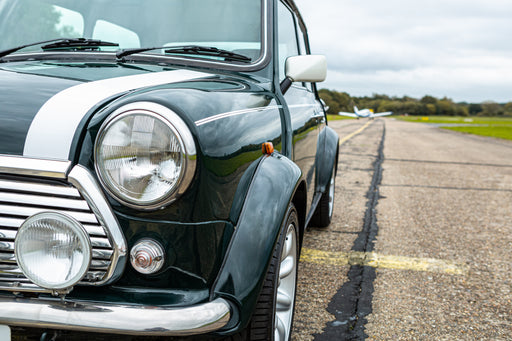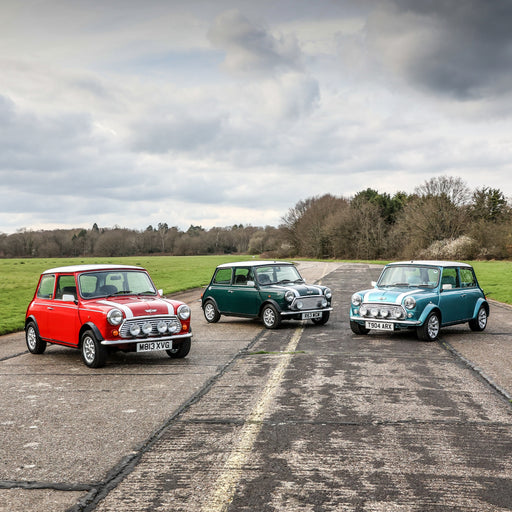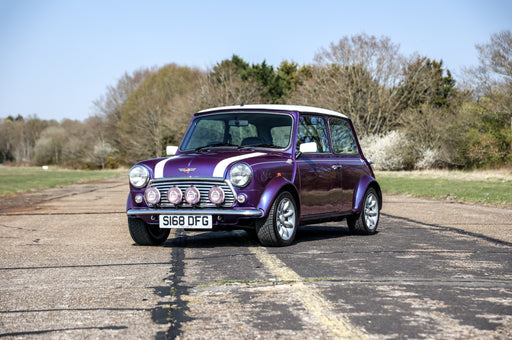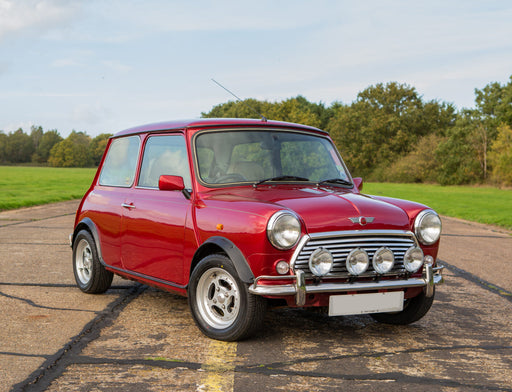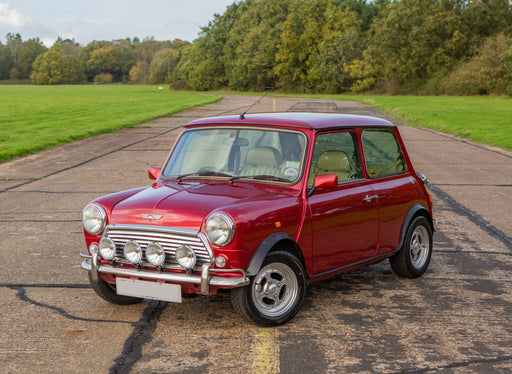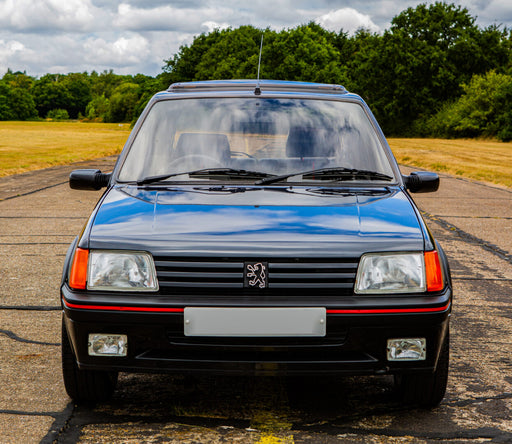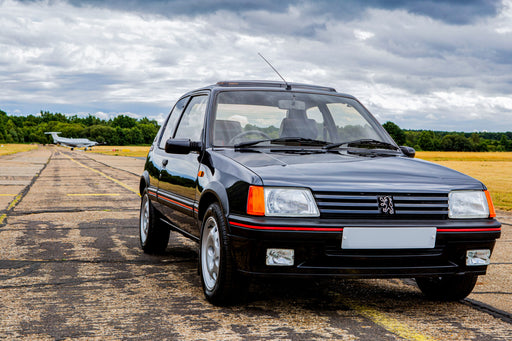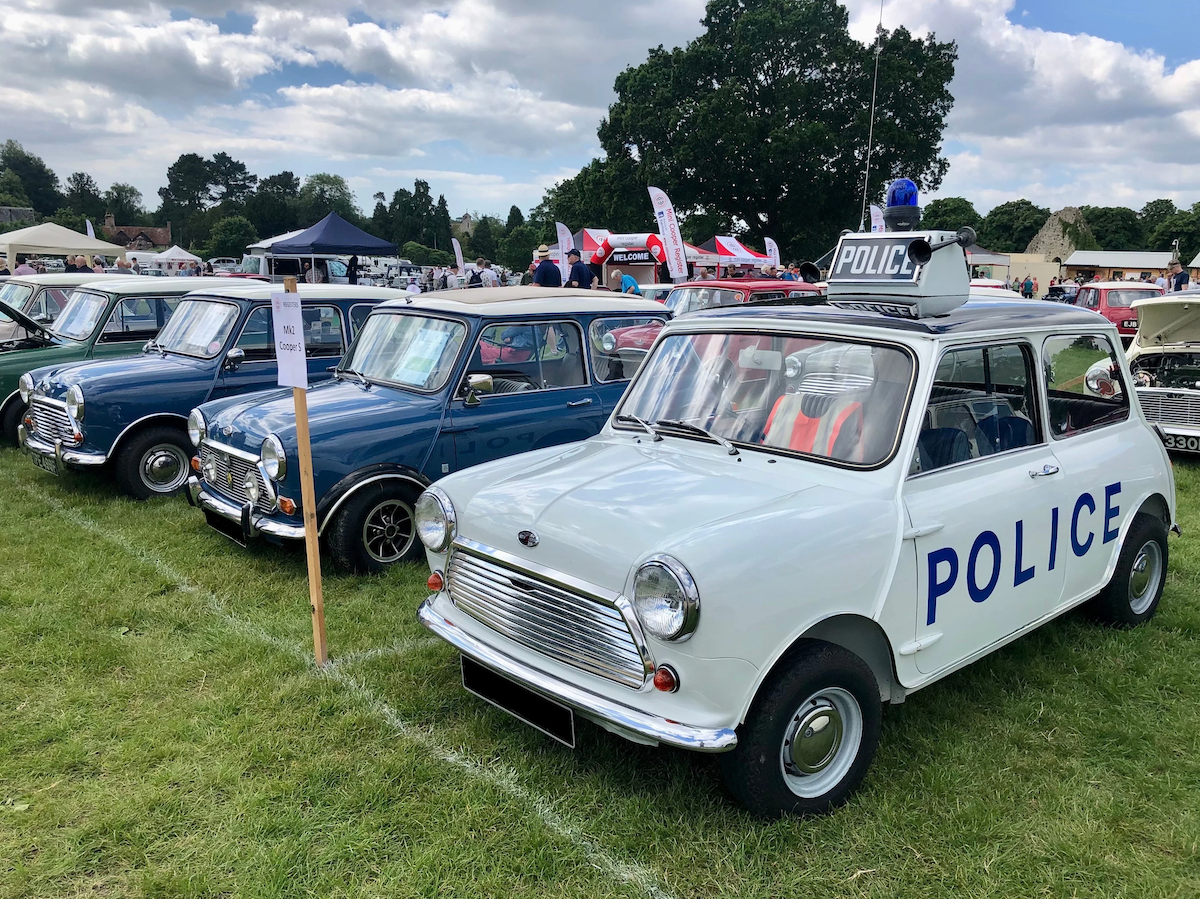
 >
>

What’s the difference between a Mk1, Mk2, Mk3 and Mk4 Mini?
Spend time around classic Minis and you’ll know that not all of them feel, or drive, the same. The Mk1-Mk4’s might share the same unmistakable silhouette, but under the skin and behind the wheel, each generation tells a different story.
So, how do they compare? And more importantly, if you're looking to buy one, which should you go for?
The Mk1: Raw, characterful, and utterly iconic
The Mk1 is the car that started it all. With its external door hinges, sliding windows, and that tiny rear screen, it’s the purest expression of Issigonis' vision. But beyond the styling quirks, what really sets the Mk1 apart is how it feels on the road.
There’s a rawness to the drive - a direct, mechanical connection between you and the car that’s hard to replicate. The early gearbox has that long, spindly gear lever with a bit of a vague throw, and the steering is wonderfully weighty at low speeds, lightening up as you gain pace. You hear everything. You feel everything. There’s no insulation from the experience, and for many people, that’s exactly the point.
If you're a purist, or someone who enjoys cars in their most unfiltered form, the Mk1 delivers. It also happens to be the most valuable of the three in today’s market. Original Cooper and Cooper S models, in particular, fetch eye-watering sums, and values don’t seem to be slowing down any time soon.
But with that comes a bit of compromise. They’re not the easiest to live with day-to-day. The early gearboxes can be temperamental, parts can take longer to find, and rust is always a lurking threat - especially around the floors and subframes. Still, for sheer nostalgia and investment potential, the Mk1 sits at the top.
The Mk2: A subtle update that’s often overlooked
The Mk2 is, in many ways, the Mini in transition. It still shares a lot with the Mk1 - the same sliding windows and same basic structure, but it introduces a few refinements that make it just a touch more usable.
The most noticeable change is the larger rear window, which gives you a bit more visibility out the back. The front end received a design tweak too, with a revised grille and lighting arrangement that gives the Mk2 a slightly squarer, more modern face. Underneath, you’ll find some reliability improvements as production evolved, but at heart, it still delivers that same old-school Mini feel.
The Mk2 tends to live in the Mk1’s shadow, but that’s not necessarily a bad thing. It means there are still relative bargains to be had, especially if you want the early look and feel without paying Mk1 Cooper prices. And because production numbers were lower than both the Mk1 and Mk3, good examples are increasingly desirable among collectors who want something a little different from the crowd.
On the road, a well-sorted Mk2 is indistinguishable from a late Mk1 in many ways. You still get that chuckable, lightweight handling, the engine still delivers that familiar rasp, and you still feel connected to the car in a way that modern vehicles just can’t replicate. But thanks to small upgrades and slight refinements, it’s arguably a more sensible buy if you plan to drive it regularly.
The Mk3: Everyday practicality meets classic cool
Then there’s the Mk3. By the time it rolled out in 1969, British Leyland had started to shift focus towards making the Mini more appealing to a broader market. Gone were the external hinges and sliding windows. In came wind-up glass, hidden hinges, and slightly larger doors to meet modern expectations.
From a purist’s perspective, the Mk3 is sometimes seen as the beginning of the end for the original Mini design. But from a driver’s point of view? It’s arguably the best compromise.
The cabin feels slightly more spacious. Getting in and out is easier. And if you’re planning to spend time in your Mini, the Mk3 is far more forgiving. You’ll notice less wind noise, better weather sealing, and fewer rattles (well, slightly fewer - it’s still a Mini).
It’s also the most accessible of the three when it comes to price. Because it’s not as “classic” looking as a Mk1 or Mk2, Mk3s tend to be more affordable, making them a great entry point for new buyers. But don’t mistake affordability for lack of charm. Late Mk3s, especially those produced before the big styling changes of the 1980s, still have loads of character - we think that they’re a blast to drive.
The Mk4: Comfort creeps in (just a little)
The Mk4 didn’t radically change the Mini’s DNA, but it marked a shift towards making the car more refined and comfortable. Mechanically, the big news was the switch to 12" wheels and front disc brakes as standard, transforming stopping power and grip. This alone made a huge difference to how the Mini drove in real-world conditions.
Inside, the dashboard and trim were upgraded across the range, making the Mk4 feel more like a ‘proper car’ than a stripped-back runabout. Suspension tweaks improved ride quality, and while the Mini still handled like a dream, it no longer rattled your teeth over every bump in the road.
Some purists could grumble about these changes, but the Mk4 makes a compelling case for itself, especially if you plan to drive your Mini regularly and want one that feels just a bit more composed.
Our Services
Do you have a Classic Mini to sell? Or are you looking to buy one? We offer Classic Mini appraisals, fair pricing, and fast collection for sellers – sell your classic Mini or see our full range of Classic Minis for sale.
If you're searching for a Classic Mini, contact us or sign up for our email list to receive stock alerts when new models arrive.
Latest Classic Cars For Sale
classic minis wanted
We are actively seeking classic Minis in excellent condition, ideally with low mileage and a detailed history, especially models such as the Cooper...
View details2000 classic mini cooper sport
Supplied new by Hartwell Rover of Abingdon on 29th September 2000, this Mini Cooper Sport is presented in Solar Red with a Platinum Silver roof and...
View details1999 classic mini cooper sportspack
Originally supplied by Wilsons Rover of Whitley Bay on 29th October 1999, this Mini Cooper Sportspack is finished in iconic British Racing Green wi...
View details1999 classic mini cooper s touring by john cooper garages
As featured in MiniWorld Magazine. In 1997, John Cooper Garages launched two new exciting iterations of the iconic Mini Cooper S: the Cooper S Tour...
View details1996 classic mini 'cooper s touring' by miniworld & john cooper garages
A unique opportunity to purchase a MiniWorld Magazine feature car specially converted by John Cooper Garages. This Mini was supplied to Link House ...
View details1989 peugeot 205 gti 1.9
First registered on 29th September 1989. 84,000 miles from new. Driven a mere 5,000 miles in the past 15 years. A collector-quality example. Meticu...
View details
